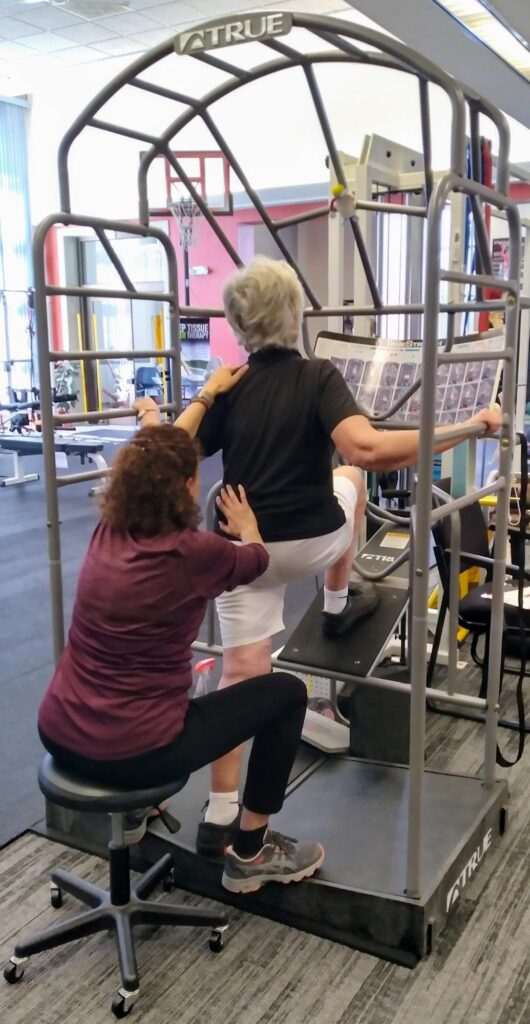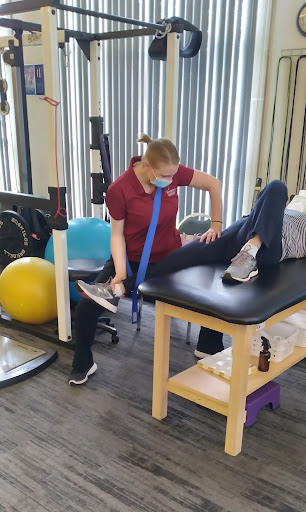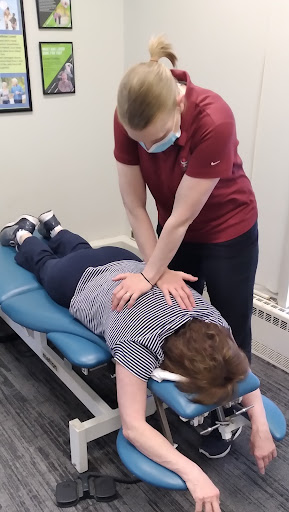Hands-on or manual physical therapy techniques have been around for ages. They’ve continued being perfected and developed over, especially the past several decades, including more studies proving the benefits on a variety of musculoskeletal conditions/injuries. The Peak Performance team has learned and trained under a wide array of manual therapy experts from physical therapy, chiropractic, osteopathy, and massage therapy backgrounds. While some therapists choose to specialize in a single hands-on skill approach, we are fortunate to have team members highly trained across numerous hands-on disciplines, allowing us to have a large “toolbox” of options depending on the patient’s needs and any individual preferences or concerns that may exist.
Understandably, some patients have a bit of hesitancy or reservation about a health care professional putting their hands on an injured area. Past trauma, tissue sensitivity, and fear of exacerbating pain are considerations we as therapists must take into account. A key component of effective manual therapy is communication and patient education. We’ll not only use our professional judgment in choosing the proper techniques but talk with you about the techniques so that it makes sense to you as well. We’ll never do any “surprises” or “try to pop” a joint unexpectedly!
Hands-on techniques are generally split into soft tissue and joint-related techniques. Your therapist will determine if these techniques will help promote your recovery and which are the suitable approaches to use. Manual therapy, in general, is used to promote pain relief and increase tissue mobility to restore and optimize function. There are many commonalities among various health care providers regarding the types of techniques used.

Chiropractors, osteopaths, medical doctors, athletic trainers, and massage therapists often perform manual therapy techniques. In physical therapy, we can utilize non-thrust techniques (not quick “popping” or “cracking” a joint) effectively. This is key because some patients may have had or heard of bad experiences with joint manipulation thrust techniques and initially prefer, especially for their spine, not to be “popped” as a treatment. We also have the advantage of doing both soft tissue and joint-based techniques. Massage therapists, for example, are specialized in gentle tissue techniques, but they are not trained or licensed to perform joint mobilizations.
Many manual therapy techniques, though effective, are traditionally done sitting or lying on a table. This can leave a significant “leap of faith” for our bodies, neurologically speaking, in terms of the familiarity and ease of applying the new mobility into daily life. A key difference with your therapists at Peak Performance is that we’ve been trained in Functional Manual Reaction ©, a form of manual therapy explicitly done in function positions. This can be a great way to integrate practical movement gains into real-life day-to-day work or athletic endeavors.
Some of the common problems we find hands-on or manual therapy helpful for include spine pain, frozen shoulder, shoulder tendonitis/impingement syndrome, post-operative conditions, knee arthritis, hip arthritis, shoulder arthritis, ankle sprains, sacroiliac dysfunction, tendonitis conditions… The list goes on and on! Below is a bit more information on how the therapists at Peak Performance help patients with manual therapy-based treatments.
Joint Mobilization Therapy
Joint mobilization is a hands-on technique that involves a skilled professional moving or guiding the bones to move in ways that you could not do to yourself by simple movement. Joints go through varying rolling or gliding-type motions for the body part to move. When these rolls and glides are restricted, the range of motion is limited or becomes abnormal, and often may be painful also. Joint mobilization works to restore more normal mechanics to the joint.
A variety of things may restrict standard joint mechanics, such as a tight joint capsule or local adhesions/contracture of connective tissue. Think of the joint capsule as a layer of connective tissue enveloping or wrapping around the entire joint. It helps hold things together, but it also must have enough freedom so the bones can move properly. Joint mobilization can work to restore joint motion by improving a joint capsule’s freedom. There’s a variety of specialty techniques the therapists at Peak Performance utilize depending on the patient’s specific needs.

Soft Tissue Release Techniques
Soft tissue release techniques focus on muscle tissue and fascia (connective tissue) through highly gentle up to temporarily painful deep tissue techniques. There is no one-size-fits-all answer when it comes to soft tissue techniques. We see patients who have visited a provider who does light myofascial work only to find out that they responded best to a more deep tissue trigger point release technique. And indeed, others may have experienced getting a deep technique using a provider’s elbow or a tool but found only temporary relief and needed a more gentle sustained release or even a switch to include joint mobilization.

When the body is in pain, the nervous system can facilitate a protective muscle guarding contraction near or around the injured area. Even adjacent joints can become stiff due to the “splinting” of a body part – think of a sore elbow where one might maintain the arm against the body all day long, causing elbow stiffness and shoulder and neck muscles to tighten excessively and eventually restrict mobility. These contractions can alter the normal metabolism of the tissues, leaving waste products from the cells building up and contributing to a cycle of pain-spasm-pain-more/sustained spasm that can become painful and limit freedom of motion. Sometimes, this can produce “knots” or tight “bands” of muscle tissue that can be felt by hand. A trigger point can develop that may refer to pain in an adjacent or even distant part of the body.
Soft tissue dysfunction or issues can be the primary problem, especially after directly injuring the muscle. These are often “secondary” problems caused by reflexive guarding due to the pain from the actual injury, for example, the tendon strain or the ligament sprain that occurred. Any underlying causes for the tightened soft tissues must be discovered or addressed. Otherwise, it is too often that temporary relief happens when only delicate tissue work is done, but since the cause was not addressed, the nerve signals promoting muscle contraction persist.
Soft tissue techniques can improve blood flow and local metabolism, improve the flow and processing of lymph fluids, mechanically lengthen shortened tissues/fibers, and neurologically reduce the facilitation of the spasm/contracted tissue.
Soft tissue techniques can be done directly with the hand and can be “instrument-assisted” with various shaped tools that allow for unique benefits to mobilizing specific tissues. Our therapists may utilize myofascial release techniques, deep tissue, trigger point, traditional, active movement release based, and other techniques depending on specific patient needs. These are always specific and not a more generic “Swedish massage” style meant for general relaxation. Functional Manual Reaction © techniques done in function positions may also be utilized. Ask your Peak Performance therapist about what role soft tissue techniques might play in your care.
Once again, as mentioned above, with soft tissue techniques, having an extensive toolbox is valuable. A single process is not the only option for a patient or therapist. Our therapists utilize Maitland, Kaltenborn, Mulligan, Cyriax, osteopathic based, angular joint mobilization, and other styles or techniques. Functional Manual Reaction © techniques are also often used in specific functional movements or positions.
Manual Therapy at Peak Performance
Soft tissue release and joint mobilization techniques are most often used with other treatments. Too often, patients who have failed prior conservative care or even physical therapy tell us that manual therapy was not done at all or was somewhat generic. Many (but not all) conditions, injuries, and post-operative cases will benefit from hands-on techniques to speed recovery and reduce symptoms. A key to that is integrating the improved motion into real-life abilities. We utilize customized functional exercise methods to help train the nervous system and muscles to use the new ranges effectively. If you increase the range of motion but have not yet developed control of that new motion, the body may be at risk for subtle “instability” or poorly controlled motion. This can contribute to dysfunction and pain.
The licensed physical therapists and physical therapy assistants at Peak Performance are highly skilled in various hands-on manual therapy techniques to speed and optimize recovery. Contact the team at Peak Performance to find out what’s causing your issues and see if manual therapy may help you!










